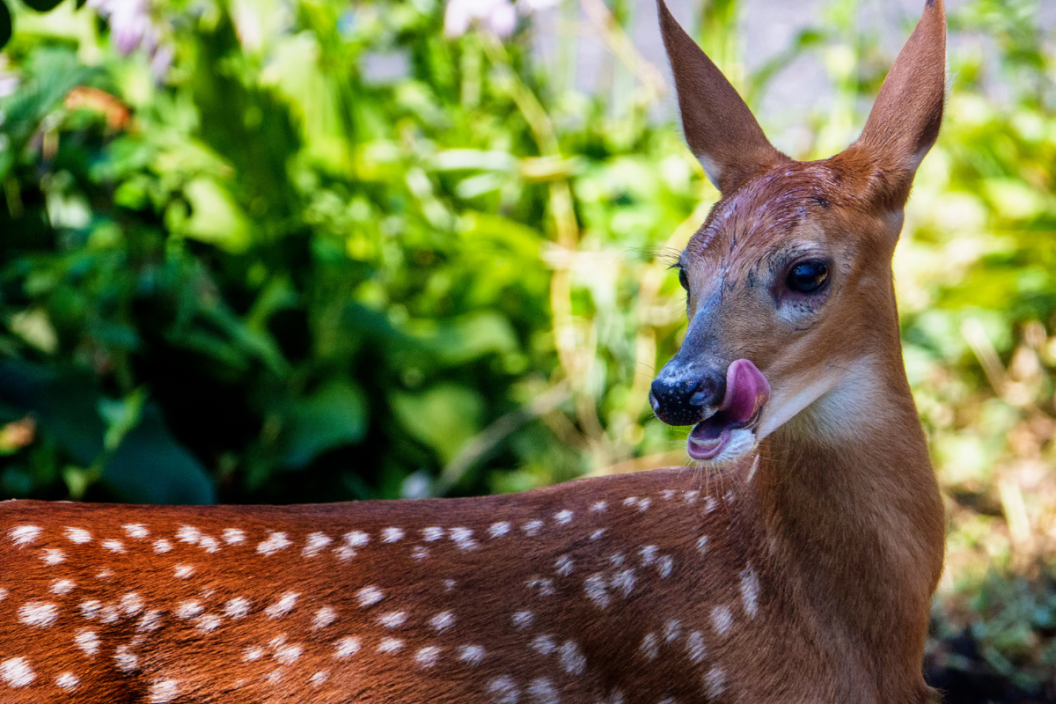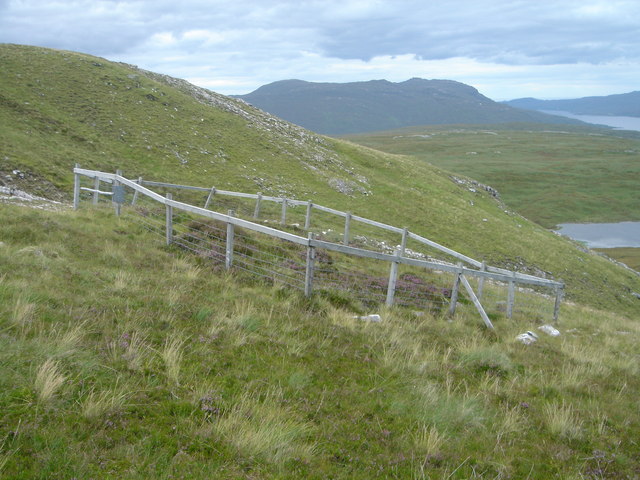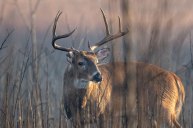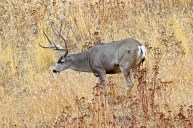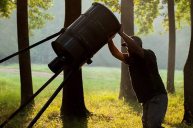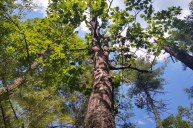Before you hardened whitetail deer hunters contemplate this question and chuckle, let's take a quiz: What are the names of all the crankbaits you have in your tackle box? Yes, we should all know by now what the deer we know and love like to eat to survive, but without having it all right in front of us, we might need a little kick in the pants to help us remember.
This is not to mention all of the new and younger prospective hunters out there who want to see a list of these items, not to mention the science behind why deer eat what they eat. Whitetail deer hunting is what we live for. Knowing that we have spent our lives and our hard-earned dollars in the effort to understand this quarry like the back of our hand, and we don't spare the horses to do it.
In the fall, we hunt them, and in the spring, we love them. They are born in the new warmth of the early year and grow right before our eyes, especially on our trail cameras. We grow food plots to give them an added edge in their growth, and we tend that field like a cash crop. So, let's look at the science behind the whitetail diet, what they eat in nature, and what we've found to use as high-energy supplemental feed for them.
The Science Behind Deer Diets
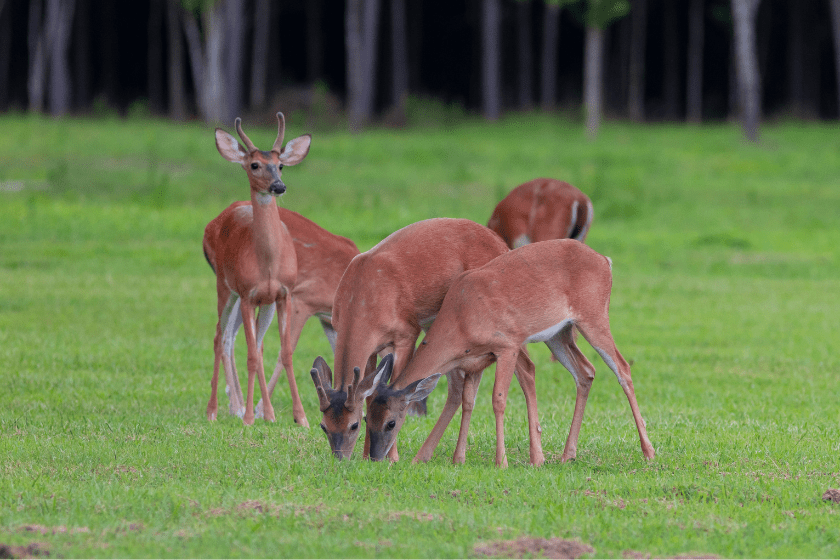
gsagi via Getty Images
First, there are good whitetail deer populations from Texas to New York and Alabama to Minnesota. The plants and mast they eat from these states are similar and completely different since the regions are so far apart. Deer love soft mast, such as berries, in the summer, and hard mast, such as acorns, in the fall, based on their availability. This makes their diet much the same as most creatures in the wild: seasonal.
The Mississippi State University Deer Ecology & Management Lab says that "understanding diet selection by white-tailed deer is best accomplished by first knowing what whitetails 'should' eat." Whitetail deer have a more narrow snout and long tongue that allows them to seek out specific plant parts delicately. They tend to have a more competitive advantage over other like-minded ruminants when it comes to foraging. According to Mississippi State University, whitetails' "relatively smaller and less complex gastro-intestinal tract requires they eat forages that are of relatively higher quality and more easily digestible than forages eaten by cattle, elk, and moose."
So, you may think their diet would have to eliminate certain foods like acorns, which come loaded with tannins that are difficult to digest. Yet, they have an active salivary function, with glands that produce an enzyme that breaks down and deactivates secondary plant compounds such as these to allow deer to eat them in quantity.
Still, they need to eat higher quality and more easily digestible forages than those consumed by rumina like cattle, elk, and even the closely related moose.
Some deer starve to death with their stomachs full of low-quality forage in areas where food sources were depleted, and the deer ate whatever was available. Not everything can be an ideal deer food with high protein content. Now, suppose you're still waiting for the list of what the deer are eating. In that case, you may be surprised since the study indicates that whitetail deer have been documented to eat over 400 species of plants and other forage in the southeast alone. There's no use in listing them all right now.
As we know here in the northeast, deer are a product of their environment. Generally, they adapt to what they have available such as all the consequences of farming. Here is one of the most significant reasons why farmers across the nation are granted yearly nuisance permits to cull from the deer herd for the entire year. This may put a burr under the saddle of some hunters. Still, the fact remains that crop damage by whitetail deer is genuine and very detrimental to our highly valued farming communities. Farmers have told me in the past that they walk right down the edge of a 200-yard squash field and take one bite out of every single one. Now, they can't sell it.
As farmers and whitetail deer are pretty adaptable, many crop growers use some fields strictly for the seeds produced while using what they can from the fruit. Most squash fields are entirely harvested by the time deer season rolls around. Deer hunters that want to hunt near a food source should find something else when other items are gone, such as corn, soybeans, or acorn mast-producing areas.
For the many things deer are documented to eat, it still comes down to the fact that only about a third of those food items or less make up over 90 percent of their overall diet. MSU again: "Throughout the range of white-tailed deer, greater than 85 % of their overall diet consists of browse, forbs, and mast."
Browse includes:
- The leafy parts of woody plants
- Forbs (herbaceous broad-leaved plants, including some crops)
- Hard and soft mast (including seeds) grass
- Even mushrooms or lichens
Most of us have probably seen deer browsing in a park or right in our yards for grass to supplement their diet. Still, it is considered a low-quality forage for an animal whose faster digestive process requires a more readily digestible food source. More critical is the wide variety of crops eaten whenever available since they are more nutritious and better digestible foods. In northern climates, leaf buds and the winter foliage of many evergreen trees and shrubs, like arborvitae and yews, are also impactful food sources.
Ok, So What Do Deer Eat?

Iwctoys at the English Wikipedia, CC BY-SA 3.0, via Wikimedia Commons
These are only some of the main foods deer like to eat. The quantity of these foods differs throughout the year and the region you are hunting. The one main reason deer can eat corn is that they can only glean small amounts of it from leftover crop fields as a supplement to their diet of regular browse.
Most state wildlife departments frown on corn-feeding deer. Sharp changes in diet, like browse to fermentable carbohydrates like corn, can cause fatal acidosis. It is said that deer can even starve with a stomach full of alfalfa they cannot digest simply because their bodies cannot adapt quickly enough to it as a food source. In other words, they can have corn and alfalfa in their diet, but not all at once and in quantity.
During the growing year, deer enjoy a wide variety of fruits and vegetables (ask any farmer) that they can reach. These include apples, grapes, plums, cherries, pears, pumpkins, carrots, snap peas, red peppers, squash, honey locust, and many more. They'll try anything.
As stated, listing the extreme variety of things whitetail deer are documented to eat would be exhausting. So, we'll stick to some of the better-known items on a deer's grocery list. You will have conflict in areas where these fruits and vegetables are grown near deer. This could be from the deer eating, ruining, or destroying the crop to poachers using an uncommon food source to try and attract deer illegally.
Probably the essential source of nutrition for deer is still the many browse plants which can be shrubs or young trees within reach of deer. Browse plants are almost always available in one form or another, no matter what time of year. There is usually some part of the bud or twig that can be used as nutrition.
Some of the most critical mast items are the nuts like chestnuts, especially the inimitable acorn, which many feel is the whitetail deer's favorite. Beech nuts, hickory nuts, and walnuts may be a part of a whitetail's diet, but even though they are much more challenging to open, let's not count them out just yet.
And what about cereal grains? Oats, wheat, and rye are on the menu, but it is also a case of opportunistic feeding. Nuts and mushrooms are high in phosphorous, which helps deer, especially bucks, to replace what is needed for antler mineralization. Maybe the best question should be, what don't deer eat?
Food Plots
For folks willing to do the work and want to supplement their resident whitetail population's food sources, the food plot is just what the doctor ordered. The usual choices are perennials like alfalfa and clover, along with cereal grains like wheat, rye, oats, and triticale, and maybe the most popular come in the form of brassicas: the genus of a group of broadleaf perennials that belong to the mustard family including cabbage, cauliflower, broccoli, collards, rutabaga, mustard, kale, swede, radish, turnip, rape, and canola.
Brassicas are an excellent choice in northern climates, where they can survive the snow and cold and continue to come back strong. Whether it's recreated winter feeding or supplemental feeding, the preferred foods of the whitetail deer still come in the form of the food plants that these herbivores know the best. Indeed, there is a difference between deer management and deer baiting. However, some still hold that food plots offer an unnatural attraction for deer.
Whether the deer find new food or use the natural resources around them, they still have the exact nutritional needs they did throughout their history. They still use up much of their fat reserves during the rut and need to survive the winter months by finding what they can based on their region.
This can be a cold weather area or a more southerly part of North America. Still, it usually comes down to the woody browse they rely on the most. Since we have an endless amount of studies on what deer feeding is based on, we should have all of the answers as to what a deer's diet is, right? Well, forget about that whitetail wizards. Until the deer start telling us everything we want to know, we'll continue to watch and learn everything we can about our favorite game animal.
READ MORE: 4 STATES WITH THE BEST PUBLIC LAND HUNTING
